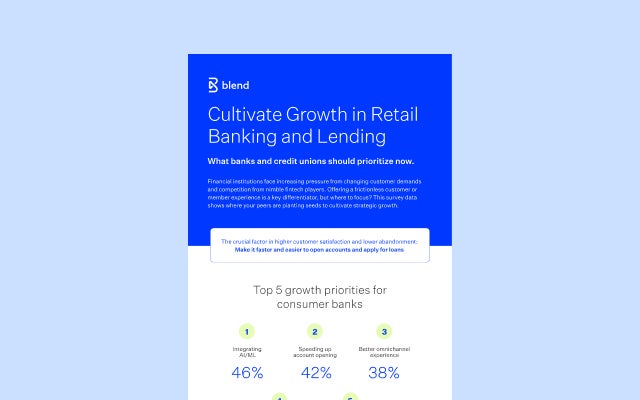July 30, 2020 in Thought leadership
4 lending technology trends that are here to stay

In the current environment of remote work and dynamic market conditions, banks and credit unions are seeking solutions that enable agility. We sat down for a conversation with two senior analysts from Aite Group, Tiffani Montez and Leslie Parrish, to discuss prevalent technology trends in the lending industry. The benefits of these themes revolve around flexibility and more proactive, personalized lending.
1. Elimination of the barriers between physical and digital channels
When physical channels were taken off the table this year, it had a huge impact on lenders. In the short term, lenders are working to ensure their consumers understand their ability to complete standard in-person activities on a digital channel. For the long term, there has been a realization that it’s possible to do business without relying on physical distribution points.
Financial institutions are all over the spectrum of digital transformation, but the organizations that have already invested in digital lending platforms are seeing significant results in 2020. Parrish shared an anecdote about a large bank that has transitioned to a more digital process across a variety of their lending products. In this specific example, the switch to a digital solution delivered four times the application starts and completes, consistent pull-through rates, and an increase in volume during this challenging time. She explained that the organization is pleased about how their investments are taking off and flourishing while competitors play catch up.
2. Adoption of a unified lending platform to design more operational flexibility
The conversation around the benefits of a consistent lending platform across all products often focuses on borrowers. From easier applications to omnichannel abilities, it’s easy to get caught up in the positive results for consumers. However, this year’s surge of mortgage refinance loans has pushed a different benefit into the spotlight.
When demand surges or wanes for one type of loan, a unified lending platform allows organizations to shift employees to a different loan type where they’re needed. For many organizations this year, auto loans have been down but there’s been a spike in mortgages. In these instances, lenders are familiar with the format of the platform so the learning curve is not as steep. Finding ways to enable more agility like this will become increasingly important for financial institutions as the lending landscape continues to evolve.
3. Opportunity for more personalized and effective marketing offers
Financial institutions are just beginning to scratch the surface of the potential granted by their data. When it comes to marketing offers, Montez said that banks often “treat customers like they’re one of a million, rather than treating them like they’re one in a million.” She highlighted an opportunity for the industry, regardless of product, to start using the data they have about a customer to personalize individual product offers.
Beyond the standard personalization of fees and rates, lenders have the chance to better demonstrate to a customer why that product is right for them. Montez offered the example of sending an email with an offer when a customer is pre-approved for a credit card. When they click the link, they’re taken to a product selection tool, asked to answer some questions, and then shown products that might be best for them.
“But if you’re a financial institution and you know how and where they spend money, and how much money they spend, you should be able to tell them the credit card that is the right one for them and even be able to give them an indication of: if you spend the same amount of money that you spent last year, I anticipate you will be able to earn 100,000 miles, for example,” she explained. Banks are now able to hone in on what a specific product can do for the customer.
4. Unlocking unstructured data to create efficiency
According to Parrish, one of the most promising lending technology trends is the use of OCR (optical character recognition) to examine data in different forms. Whether it’s account statements or image files, digital lending solutions are able to pull out relevant data points and put them into the correct fields, so they can be used in the loan decisioning process.
“It’s really key to both customer experience and speeding up efficiency within the institution,” she said. “We’re seeing a decent amount of vendors starting to offer OCR technology or other technology to be able to parse through different types of data […] so that it can free up loan officers or other bank employees from having to do that.” This technology also helps lending teams cut down on error-prone work and enable automated follow-up workflows.
Finding the right technology partner doesn’t have to be an overwhelming process. We’ve got 7 ways to spot an outstanding lending technology partner, so your organization can take the next steps of digital transformation and stay ahead of future trends.
Find out what we're up to!
Subscribe to get Blend news, customer stories, events, and industry insights.


